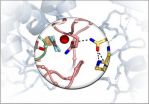(Press-News.org) MAYWOOD, Ill. -- A dozen new epilepsy drugs are giving doctors and patients more options, but making treatment decisions more complex, a Loyola epilepsy specialist reports in the journal Neurologic Clinics.
"Clinicians practice in an era of abundance of anti-epileptic drugs," Dr. Jorge J. Asconapé wrote. The new drugs provide "an opportunity to better meet the needs of more patients."
Asconapé's article will appear in the November issue of Neurologic Clinics, now available online.
Since 1993, the Food and Drug Administration has approved 12 new anti-epileptic drugs: felbamate (brand name, Felbatol®) gabapentin (Neurotin®), lamotrigine (Lamictal®), lacosamide (Vimpat®), levetiracetam (Keppra®), oxcarbazepine (Trilepal®), pregabalin (Lyrica®), rufinamide (Banzel®), tiagabine (Gabitril®), topiramate (Topamax®), vigabatrin (Sabril®) and zonisamide (Zonegran®).
Epilepsy is one of the most common chronic neurologic conditions, affecting as many as 45 million people worldwide. Infants and the elderly are at the highest risk. About two-thirds of epilepsies are localized, meaning seizures involve part of one side of the brain. The other cases are generalized, involving both sides of the brain, Asconapé wrote.
Between 60 percent and 70 percent of patients have an adequate response to drugs. But a patient who does not benefit from two drugs in a row probably won't respond to any medication. For such patients, alternative treatments include special diet, behavioral modification, hormonal therapies, neurostimulation and immunotherapy.
Drugs are divided into two groups: narrow-spectrum, which are mostly effective in focal seizures, and broad spectrum, which work for both focal and generalized seizures.
"Pediatricians and primary-care physicians ought to consider using broad-spectrum drugs rather than drugs such as phenobarbital and phenytoin, especially in children and adolescents, given the high incidence of generalized epilepsy syndromes in these age groups," Asconapé wrote. Asconapé is a professor in the Department of Neurology at Loyola University Chicago Stritch School of Medicine.
The newer drugs generally do not work better than the older drugs. But the newer drugs are easier to use, with fewer adverse interactions when taken in combination with other drugs. The newer drugs also have expanded the availability of broad-spectrum medications. This is a "major benefit for patients with generalized epilepsies," Asconapé wrote.
The long list of anti-epileptic drugs has also benefited epilepsy patients who have other diseases or conditions. This often allows for the use of drugs that either help or at least have no negative effects on those conditions, Asconapé wrote.
Asconapé's review is among 15 articles in the November issue of Neurologic Clinics that detail latest advances in the treatment and management of epilepsy and other neurological disorders. Guest editor is Dr. José Biller, chairman of the Department of Neurology at Loyola University Chicago Stritch School of Medicine.
"Great therapeutic strides in the clinical neurosciences have been made in the past decades," Biller wrote in the preface to the November issue. "It is likely that subsequent decades will bring even greater advances in neurologically oriented therapies."
INFORMATION:
END
Settling decades of scientific debate, researchers from UCLA and the British Antarctic Survey have discovered the final link between electrons trapped in space and the glow of light from the upper atmosphere known as the diffuse aurora.
The finding will help scientists better understand space weather and how space storms affect the Earth's atmosphere from the top down, with potential benefits for the satellite, power-grid and aviation industries, the researchers said.
Their research appears Oct. 21 in the journal Nature.
Scientists have long known that the diffuse ...
Medical researchers at the University of New South Wales have for the first time shown a link between a father's weight and diet at the time of conception and an increased risk of diabetes in their offspring.
The finding, reported in the prestigious journal Nature, is the first in any species to show that paternal exposure to a high-fat diet initiates progression to metabolic disease in the next generation.
"We've known for a while that overweight mums are more likely to have chubby babies, and that a woman's weight before and during pregnancy can play a role in future ...
An international CSIRO-led team of astronomers has developed a new way to weigh the planets in our Solar System – using radio signals from the small spinning stars called pulsars."This is first time anyone has weighed entire planetary systems – planets with their moons and rings," said team leader Dr David Champion from Germany's Max-Planck-Institut für Radioastronomie.
"And we've provided an independent check on previous results, which is great for planetary science."
Measurements of planet masses made this new way could feed into data needed for future space missions.
Until ...
WASHINGTON, D.C., (Oct. 21, 2010) -- Over the past decade, Christine Mahoney and a team of scientists at the National Institute of Standards and Technology (NIST) in Maryland have been working to stop the threat of terrorist-based attacks in the form of explosives or explosive-based devices, by providing a sound measurement and standard infrastructure.
"Our program encompasses many different aspects of explosives research, from development of measurement standards for trace explosives detection at airports, to the development and application of new metrology for the direct ...
Measuring three biomarkers in a single blood sample may improve physicians' ability to identify patients at high risk of developing chronic kidney disease (CKD), according to a study appearing in an upcoming issue of the Journal of the American Society of Nephrology.
"Our results identify biomarkers that can improve CKD risk prediction," comments Caroline S. Fox, MD, MPH of the National Heart, Lung, and Blood Institute's Framingham Heart Study, Framingham, Mass.
The study included more than 2,300 participants in the Framingham Offspring Study, a long-term follow-up ...
NASA's Lunar Reconnaissance Orbiter (LRO) and its sophisticated suite of instruments have determined that hydrogen, mercury and other volatile substances are present in permanently shaded soils on the Moon, according to a paper published today in Science.
The Lunar Crater Remote Observation and Sensing Satellite (LCROSS), which launched with LRO, was intentionally crashed onto the Moon's surface Oct. 9, 2009, while LRO instruments watched. About 90 seconds after LCROSS hit the Moon, LRO flew past the debris plume raised by the impact, while the Lyman Alpha Mapping Project ...
AMES, Iowa – The flu virus uses a shuttle mechanism to relay protons through a channel in a process necessary for the virus to infect a host cell, according to a research project led by Mei Hong of Iowa State University and the Ames Laboratory.
The findings are published in the Oct. 22 issue of the journal Science.
Hong, an Iowa State professor of chemistry and an associate of the U.S. Department of Energy's Ames Laboratory, said her research team used solid-state nuclear magnetic resonance (NMR) spectroscopy to determine the structure and workings of the proton channel ...
Beating the flu is already tough, but it has become even harder in recent years – the influenza A virus has mutated so that two antiviral drugs don't slow it down anymore.
Reporting their findings in the journal Science, researchers from Florida State and Brigham Young move closer to understanding why not, and how future treatments can defeat the nasty bug no matter how it changes.
The two drugs, amantadine and rimantadine, are no longer recommended by the CDC for use against flu.
They used to work by blocking a hole in the influenza A virus called the "M2 channel," ...
(Embargoed) Scientists at the University of North Carolina at Chapel Hill School of Medicine have reported the exact molecular structure and mechanisms of a major cell signaling pathway that serves a broad range of functions in humans.
Up to half of drugs approved by the US Food and Drug Administration directly or indirectly target G protein-coupled receptors. These receptors, which are proteins that live in the outer membranes of cells, take molecular signals from outside the cell and convert them into responses within – and those responses help control behaviors as ...
Research led by Klaus Stark and Christian Hengstenberg of the University of Regensburg identified a common variant of the cardiovascular heat shock protein gene, HSPB7, which was found to increase risk for dilated cardiomyopathy by almost 50%. Their paper appears on October 28 in the open-access journal PLoS Genetics.
Per year, about 6 in 100,000 individuals develop dilated cardiomyopathy (DCM), with a higher prevalence in men. This disease is characterized by an enlarged, weakened heart, subsequently affecting the pumping capacity and often leading to chronic heart failure. ...



